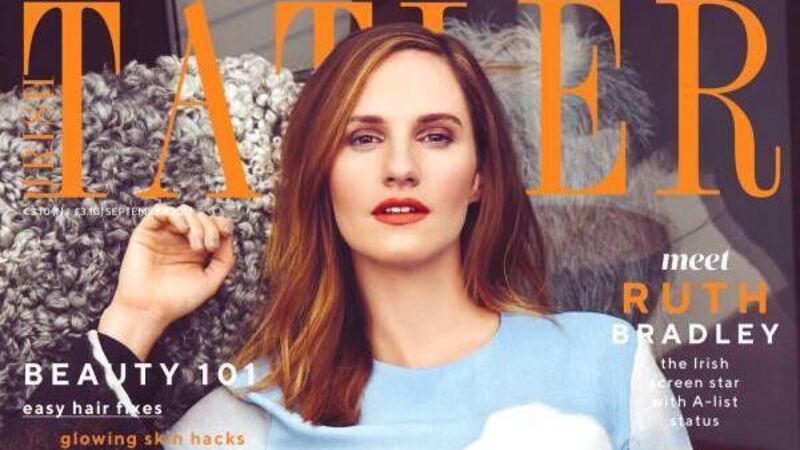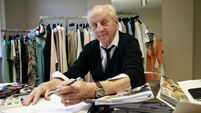In Vogue: Changing of the guard at iconic fashion magazine

It’s a decade since R.J. Cutler took us behind the scenes at American Vogue for the making of the magazine’s 2007 September issue, but long before that documentary, readers of the style bible were in no doubt that in the glamorous world of glossy magazines, September was the big issue.
Though social media continues to shake the world of print, and technology now puts fans in the front row at fashion shows, even the most well informed fashionistas continue to look to the September issue for a definitive take on the trends to buy into for the season ahead.
As the movie’s tagline puts it: “Fashion is a religion, and this is the bible”, a status reflected in the September issue’s practically biblical proportions.
With hundreds of pages of new season ads, US Vogue’s September issue runs to over 800 pages, and with full-page ads commanding $150,000, in the shifting sands of the current media landscape, the September issue remains a beacon for readers and publishers alike.
When British Vogue’s September issue dropped this month, the tome was more eagerly anticipated than usual, as it marked the final issue of Alexandra Shulman’s 25-year tenure. On August 1, newly anointed editor Edward Enninful walked the hallowed halls of Vogue House for his first official day on the job, though anyone with a passing interest in fashion knows he began ringing the changes before Shulman even vacated her seat.
Not unexpectedly, her departure signalled a changing of the guard at the century-old publication.
Perhaps unsettled by reports that Enninful planned to purge Vogue of its ‘posh girl’ contingent, over the summer, several of the magazine’s most distinguished staffers followed Shulman out the door.
Dubbed ‘Vrexit’, Shulman’s core team — from deputy editor Emily Sheffield to editor-at-large Fiona Golfar — scratched their names off the masthead in the wake of Enninful’s appointment.
Did they walk or were they pushed might be the question on everyone’s lips were it not for the sensational interview fashion director Lucinda Chambers gave in July, six weeks after Vogue announced she would be leaving after 36 years.
“I didn’t leave, I was fired,” she told Vestoj.
“I don’t want to be the person who puts on a brave face and tells everyone, ‘I decided to leave the company’.”
“It’s usual for an incoming editor to make some changes,” came Vogue’s reply, as Enninful’s intention to clean the Shulman slate became clear.
When he announced Venetia Scott as fashion director in June, he described her as “visionary, influential and inspiring”.
In July he appointed his close friends Naomi Campbell and Kate Moss as contributing editors, along with director Steve McQueen and legendary fashion editor Grace Coddington, describing them as “four of the most inspiring people I know”.

Then, makeup artist Pat McGrath joined the masthead as beauty editor-at-large, with an all-star lineup of “inspirational and highly-regarded” contributing beauty editors.
So far, so inspiring — but what of Enninful himself?
What will he bring to Vogue?
Well, they say you can’t judge a book by its cover, but that’s not true of magazines, which live or die on the strength of theirs.
September covers in particular have acquired a certain cultural cachet, and magazines go fishing several months ahead in a bid to hook the hottest and most relevant stars for their covers.
While Vogue’s September cover was once the domain of the superest of super models, Anna Wintour ushered in the era of the celebrity cover with Renee Zelwegger in 1998, and the rest is history.
Though models have made occasional returns, by and large, when it comes to September issues, celebrity sells.
Shot by Mario Testino and styled by Chambers, British Vogue’s September cover may become iconic by virtue of the cultural relevance Shulman’s departure bestows upon it, but it’s nothing if not uninspired.
Featuring Kate Moss, with Vogue favourites Stella Tennant and Edie Campbell, and ‘future icons’ Jean Campbell and Nora Attal, it neatly distills the Shulman/Chambers aesthetic into a full stop to quietly mark the end of their era.
“It’s a very Alex Shulman cover; it sums up her career and the stars she has championed,” says Shauna O’Halloran, editor of Irish Tatler.

“Is it forward-thinking or ground-breaking? Maybe not, but as a final cover, it has the Shulman stamp and it’s representative of her legacy as an editor.”
Indeed, with its seemingly willful lack of diversity, some might say it also highlights one of Shulman’s shortcomings as an editor; and for Enninful — who’s received an OBE for services to diversity in the fashion industry — addressing that longstanding issue will be a top priority.
As Vogue’s first black editor and first male editor he will doubtless bring a new point of view.
Announcing his appointment, Condé Nast’s Jonathan Newhouse referenced Enninful’s vast social media following, describing him as “an influential figure in the communities of fashion, Hollywood and music which shape the cultural zeitgeist”.
Born in Ghana and raised in west London, Enninful couldn’t be more unlike Alexandra and many of her would-be successors, not least because he hails from a styling rather than a journalistic background.
A talented image-maker, he began his career at 16, modelling for iD after he was scouted by a stylist on the Tube.
At 17 he was assisting on shoots; at 18 he was fashion editor; and by 19 he was iD’s fashion director.
Twenty years later — having caught the eye of Condé Nast execs when he contributed to both US and Italian Vogues (overseeing the latter’s ‘all black’ issue in 2008) — he became fashion director of W.
Now, that fateful Tube journey in 1988 has taken him all the way to the top job at British Vogue — and you can’t help but think this won’t be his final destination.

Just how much he plans to shake things up will be apparent when his debut issue drops in November, but expect Enninful to drag the ‘posh girl’ of publishing into a more racially and culturally diverse 21st century Britain.
Along with flagging sales, he’s charged with improving Vogue’s digital output.
On his first day as editor, Vogue launched on Snapchat Discover, embarking on a digital strategy to woo a new generation who primarily read online and respond most viscerally to the combined power of imagery and celebrity.
Still stinging from the humiliating failure of their shoppable online magazine, Style.com, Condé Nast needs a safe pair of hands for their flagship brand.
Far from being a risky choice, in Enninful they’ll be hoping they’ve found a socially, culturally and digitally aware steward to safeguard Vogue for the next 100 years.







